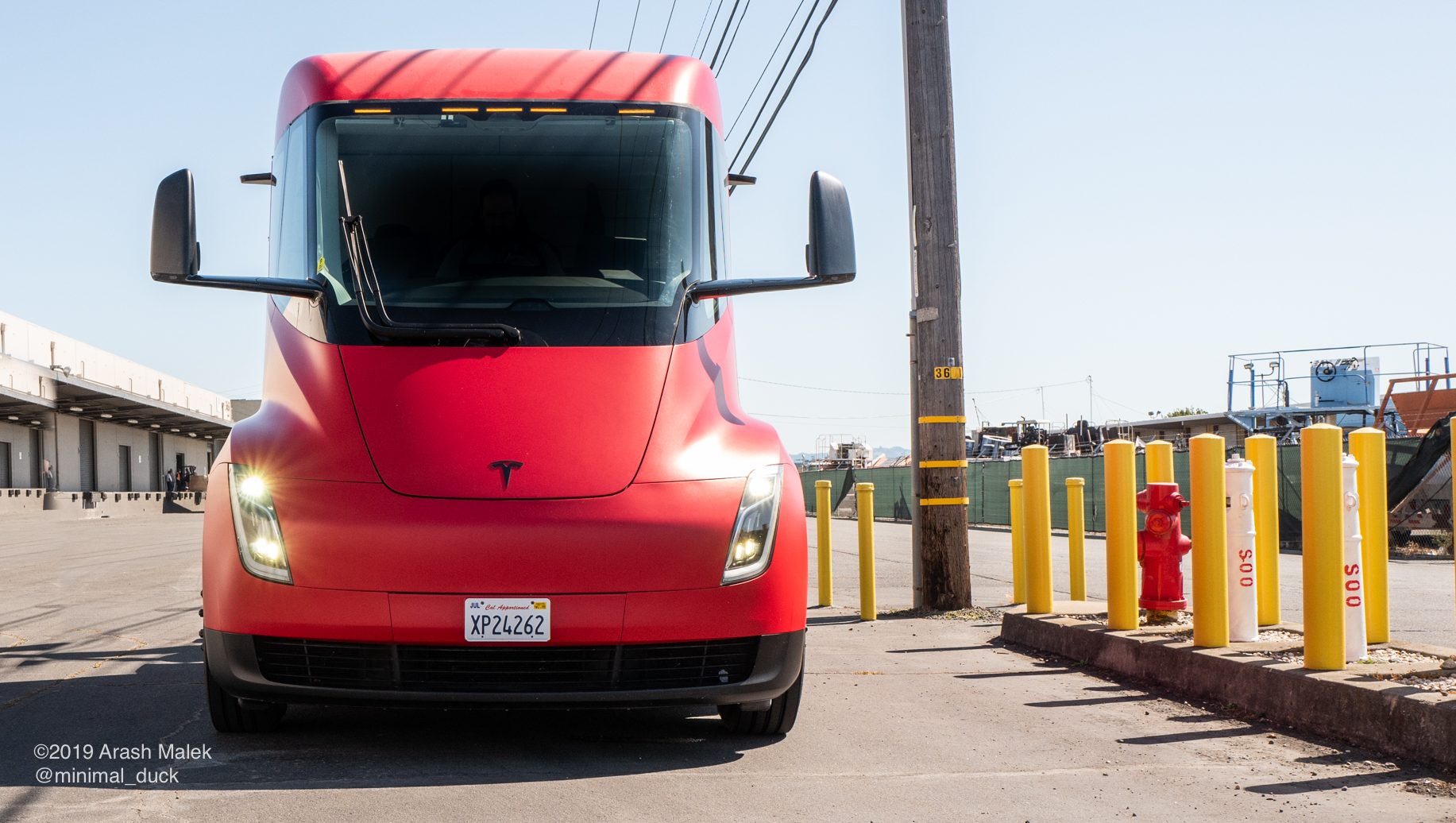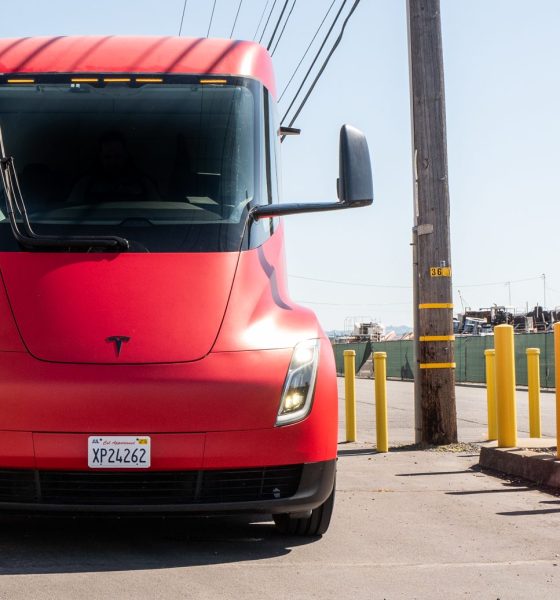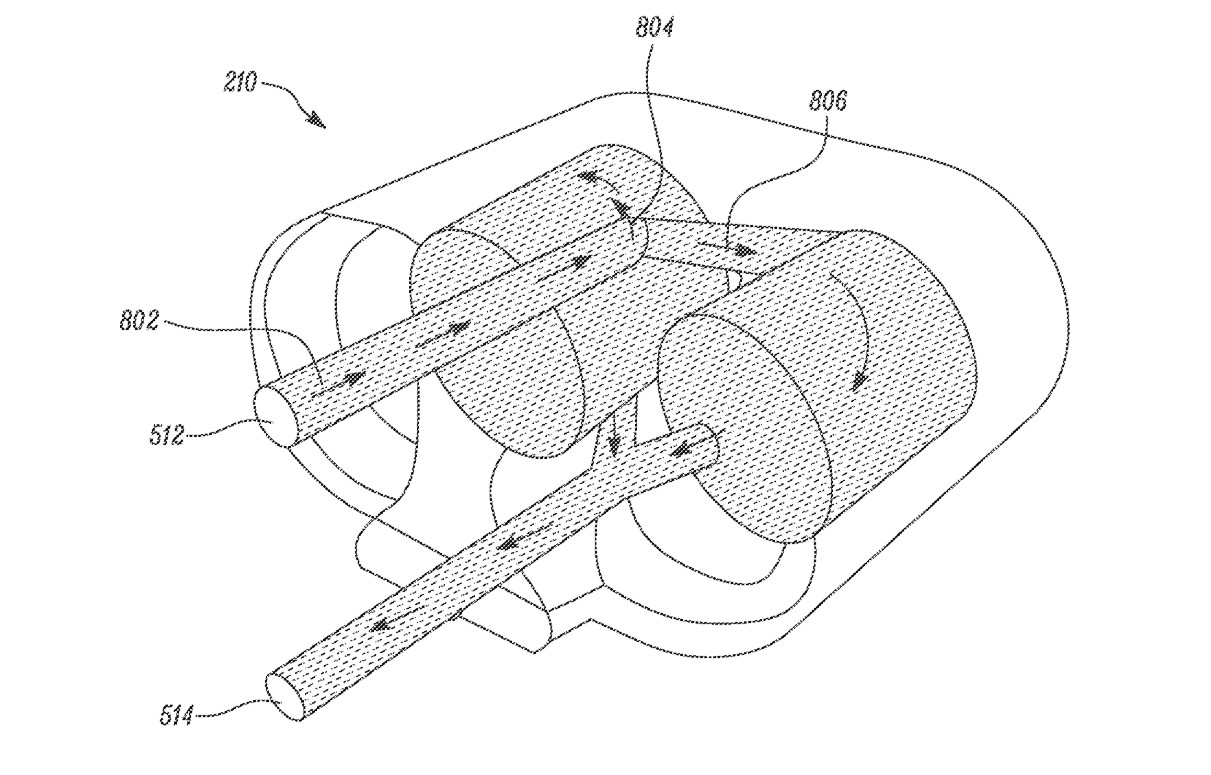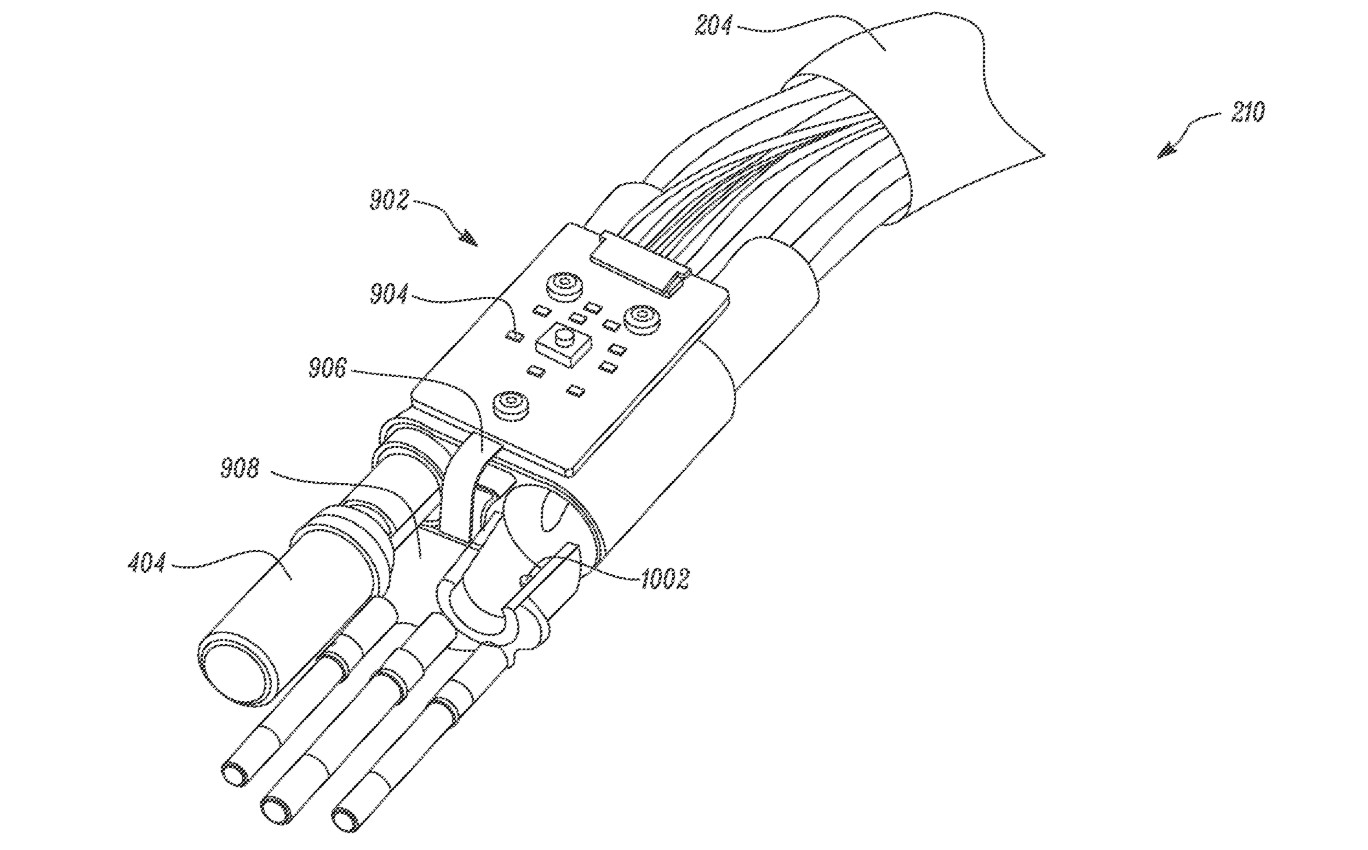

News
Tesla’s liquid-cooled charging connector patent paves way for the Semi’s Megachargers
A recently published patent application from Tesla suggests that the electric car maker is continuing in its efforts to improve its already-stellar Supercharger Network. The design outlined in the document, which features a liquid-cooled charging connector, can potentially pave the way for a more ambitious charging infrastructure, perhaps one that can specifically cater to the all-electric Semi’s Megacharger Network.
During the all-electric truck’s unveiling, CEO Elon Musk mentioned that the Semi will be able to replenish as much as 400 miles of range in as little as 30 minutes thanks to a network of Megachargers. Neither Musk nor Tesla provided the specs of the Megacharger during the vehicle’s unveiling, though speculations were high that network might provide a power output that is several times more powerful than the company’s Supercharger V2 Network, which had an output of around 120 kW then (Supercharger V2 stations have since been improved to 150 kW).
Being a large vehicle, the Semi requires a lot of power for its charging needs, involving the rapid transfer of mass amounts of electricity in a very short period of time without encountering any heating issues. This is a key concept outlined by Tesla in its recently published patent, titled “Liquid-Cooled Charging Connector,” which involves the use of a liquid cooling system on a charging connector itself. Tesla describes its concept in the discussion below.

“To transfer energy faster and decrease charging times, the cable and charging connector must be capable of withstanding high current loads. Current charging connectors are limited in the current loads that they can support as their ability to dissipate heat is limited. Thus, there is a need for a new charging connector to solve the aforementioned problems.
“The present disclosure related to a new charging connector. The charging connector has a first electrical socket and a second electrical socket. A first sleeve is concentrically coupled to the first electrical socket and a second sleeve is concentrically coupled to the second electrical socket. A manifold assembly encloses the first and second electrical sockets and the first and second sleeves, such that the first and second sleeves and manifold assembly create a hollow interior space there between. The manifold assembly has an inlet conduit and an outlet conduit such that inlet conduit, interior space, and outlet conduit together create a fluid flow path.
“Cooling fluid flows through the fluid flow path and cools the charging connector. During operation, the cooling fluid bifurcates into a first fluid stream which flows around the first sleeve, and a second fluid stream which flows around the second sleeve. The first and second fluid streams combine upstream of the outlet conduit. The first sleeve encloses the first electrical socket, and the second sleeve encloses the second electrical socket. The cooling sleeves are made from a thermally conducting material such that heat generated by electrical sockets can be removed by the cooling fluid. In embodiments, this thermally conducting material is a thermally conductive plastic material.”
Tesla notes that its liquid-cooled supercharger connector does not only allow faster charging; it also makes the routing of wires in a charging connector much more efficient. This means that Tesla’s Supercharger connectors could eventually be smaller and more compact despite being capable of greater output. An example of this appears to be hinted at by Supercharger V3’s liquid-cooled cables, which are smaller and more compact than those used in Tesla’s V2 Network.

“Cooling fluid absorbs thermal energy from heat in the electrical sockets 404, 406. Sleeves 410, 412 are made of a thermally conducting, electrically insulating material. Heat from the electrical sockets 404, 406 is transferred to cooling fluid through sleeves 410, 412. After flowing around hollow interior space 416, the first fluid stream 804 and the second fluid stream 806 combine together upstream of outlet conduit 514 and flow outside of manifold assembly 414 through outlet conduit 514. Cooling fluid flowing out of manifold assembly 414 through outlet conduit 514 may be received by a reservoir (not shown) which may provide for heat exchanging arrangements. A heat exchanger may be provided to take away heat absorbed by cooling fluid. After rejecting absorbed heat, the cooling fluid may be recirculated back to inlet conduit 512 for further cooling of charging connector 210.
“FIG. 9 shows another component included by charging connector 210. A Printed Circuit Board Assembly (PCBA) 902 is thermally coupled to charging connector 210. In embodiments, PCBA 902 is a two-part structure. A first part of PCBA 904 is coupled to charging connector 210 such that the first part of PCBA 904 sits on top of electrical sockets 404, 406. A second part of PCBA 908 is connected to the first part of PCBA 904 through a rigid-flex PCB construction, or other similar interconnects. The two-part structure of PCB A 902 allows for a more efficient routing of electrical wires of charging connector 210, and overall size of charging connector 210 may be conveniently reduced.”
Tesla’s Superchargers are among the fastest and most expansive electric vehicle charging infrastructures in the auto industry. In keeping with its spirit, the company has made it a point to never stop innovating, as exhibited by the company’s debut and ongoing ramp of its Supercharger V3 Network. This could ultimately pay off for Tesla, whose lead in the electric vehicle race might potentially increase even more.
Such innovations appear to be required of the company, especially with the rollout of ambitious EVs such as the Semi, a vehicle with a different charging infrastructure compared to Tesla’s existing lineup of electric cars. That being said, Tesla nevertheless deserves credit for pushing the envelope and staying on top of its innovations. In the electric vehicle race, after all, a liquid-cooled charging connector could end up making the difference between the fast-charging capabilities of the Tesla Semi and rivals from Daimler and Nikola.
A link to the full text of Tesla’s liquid-cooled charger connector patent could be accessed here.

News
Tesla FSD fleet is nearing 7 billion total miles, including 2.5 billion city miles
As can be seen on Tesla’s official FSD webpage, vehicles equipped with the system have now navigated over 6.99 billion miles.

Tesla’s Full Self-Driving (Supervised) fleet is closing in on almost 7 billion total miles driven, as per data posted by the company on its official FSD webpage.
These figures hint at the massive scale of data fueling Tesla’s rapid FSD improvements, which have been quite notable as of late.
FSD mileage milestones
As can be seen on Tesla’s official FSD webpage, vehicles equipped with the system have now navigated over 6.99 billion miles. Tesla owner and avid FSD tester Whole Mars Catalog also shared a screenshot indicating that from the nearly 7 billion miles traveled by the FSD fleet, more than 2.5 billion miles were driven inside cities.
City miles are particularly valuable for complex urban scenarios like unprotected turns, pedestrian interactions, and traffic lights. This is also the difference-maker for FSD, as only complex solutions, such as Waymo’s self-driving taxis, operate similarly on inner-city streets. And even then, incidents such as the San Francisco blackouts have proven challenging for sensor-rich vehicles like Waymos.
Tesla’s data edge
Tesla has a number of advantages in the autonomous vehicle sector, one of which is the size of its fleet and the number of vehicles training FSD on real-world roads. Tesla’s nearly 7 billion FSD miles then allow the company to roll out updates that make its vehicles behave like they are being driven by experienced drivers, even if they are operating on their own.
So notable are Tesla’s improvements to FSD that NVIDIA Director of Robotics Jim Fan, after experiencing FSD v14, noted that the system is the first AI that passes what he described as a “Physical Turing Test.”
“Despite knowing exactly how robot learning works, I still find it magical watching the steering wheel turn by itself. First it feels surreal, next it becomes routine. Then, like the smartphone, taking it away actively hurts. This is how humanity gets rewired and glued to god-like technologies,” Fan wrote in a post on X.
News
Tesla starts showing how FSD will change lives in Europe
Local officials tested the system on narrow country roads and were impressed by FSD’s smooth, human-like driving, with some calling the service a game-changer for everyday life in areas that are far from urban centers.

Tesla has launched Europe’s first public shuttle service using Full Self-Driving (Supervised) in the rural Eifelkreis Bitburg-Prüm region of Germany, demonstrating how the technology can restore independence and mobility for people who struggle with limited transport options.
Local officials tested the system on narrow country roads and were impressed by FSD’s smooth, human-like driving, with some calling the service a game-changer for everyday life in areas that are far from urban centers.
Officials see real impact on rural residents
Arzfeld Mayor Johannes Kuhl and District Administrator Andreas Kruppert personally tested the Tesla shuttle service. This allowed them to see just how well FSD navigated winding lanes and rural roads confidently. Kruppert said, “Autonomous driving sounds like science fiction to many, but we simply see here that it works totally well in rural regions too.” Kuhl, for his part, also noted that FSD “feels like a very experienced driver.”
The pilot complements the area’s “Citizen Bus” program, which provides on-demand rides for elderly residents who can no longer drive themselves. Tesla Europe shared a video of a demonstration of the service, highlighting how FSD gives people their freedom back, even in places where public transport is not as prevalent.
What the Ministry for Economic Affairs and Transport says
Rhineland-Palatinate’s Minister Daniela Schmitt supported the project, praising the collaboration that made this “first of its kind in Europe” possible. As per the ministry, the rural rollout for the service shows FSD’s potential beyond major cities, and it delivers tangible benefits like grocery runs, doctor visits, and social connections for isolated residents.
“Reliable and flexible mobility is especially vital in rural areas. With the launch of a shuttle service using self-driving vehicles (FSD supervised) by Tesla in the Eifelkreis Bitburg-Prüm, an innovative pilot project is now getting underway that complements local community bus services. It is the first project of its kind in Europe.
“The result is a real gain for rural mobility: greater accessibility, more flexibility and tangible benefits for everyday life. A strong signal for innovation, cooperation and future-oriented mobility beyond urban centers,” the ministry wrote in a LinkedIn post.
News
Tesla China quietly posts Robotaxi-related job listing
Tesla China is currently seeking a Low Voltage Electrical Engineer to work on circuit board design for the company’s autonomous vehicles.

Tesla has posted a new job listing in Shanghai explicitly tied to its Robotaxi program, fueling speculation that the company is preparing to launch its dedicated autonomous ride-hailing service in China.
As noted in the listing, Tesla China is currently seeking a Low Voltage Electrical Engineer to work on circuit board design for the company’s autonomous vehicles.
Robotaxi-specific role
The listing, which was shared on social media platform X by industry watcher @tslaming, suggested that Tesla China is looking to fill the role urgently. The job listing itself specifically mentions that the person hired for the role will be working on the Low Voltage Hardware team, which would design the circuit boards that would serve as the nervous system of the Robotaxi.
Key tasks for the role, as indicated in the job listing, include collaboration with PCB layout, firmware, mechanical, program management, and validation teams, among other responsibilities. The role is based in Shanghai.
China Robotaxi launch
China represents a massive potential market for robotaxis, with its dense urban centers and supportive policies in select cities. Tesla has limited permission to roll out FSD in the country, though despite this, its vehicles have been hailed as among the best in the market when it comes to autonomous features. So far, at least, it appears that China supports Tesla’s FSD and Robotaxi rollout.
This was hinted at in November, when Tesla brought the Cybercab to the 8th China International Import Expo (CIIE) in Shanghai, marking the first time that the autonomous two-seater was brought to the Asia-Pacific region. The vehicle, despite not having a release date in China, received a significant amount of interest among the event’s attendees.








